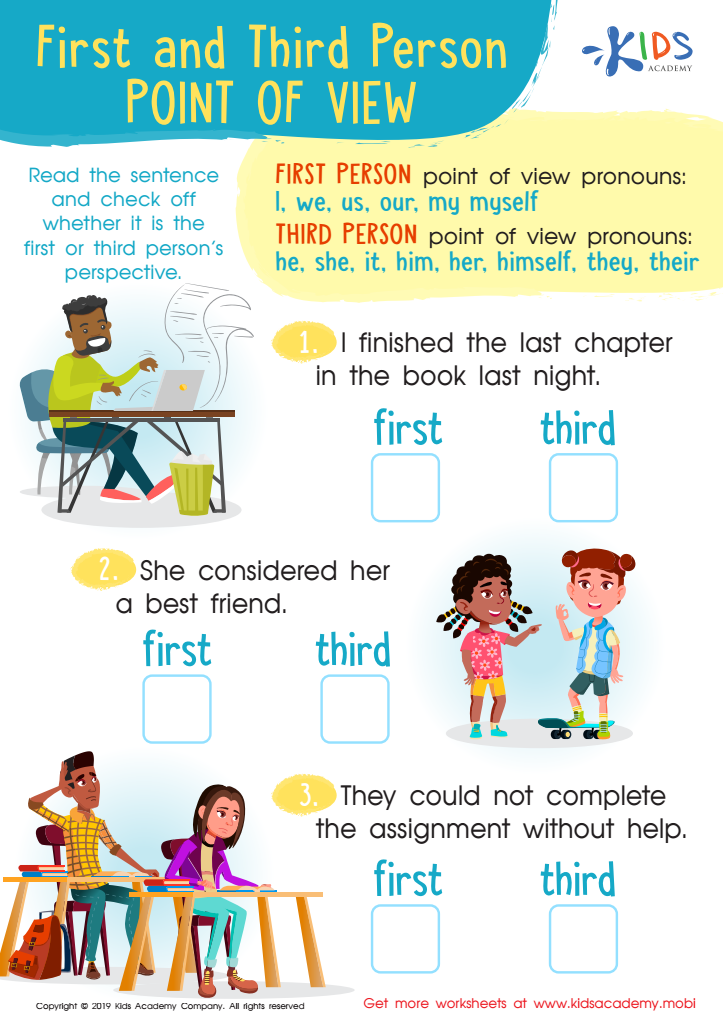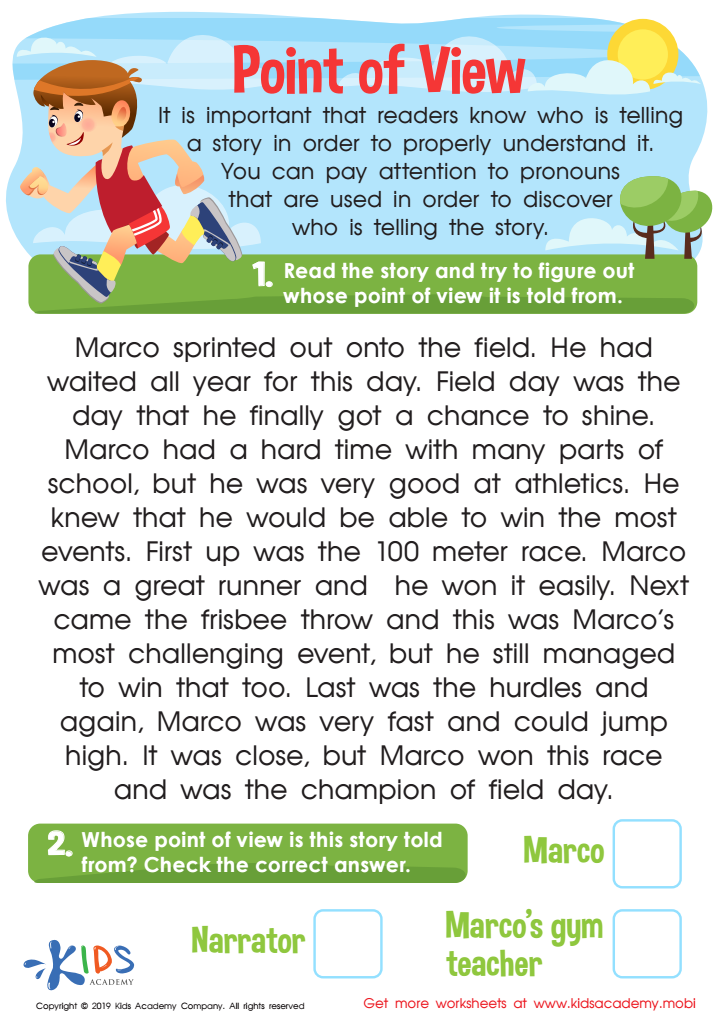Understanding perspectives Normal Reading Fiction Worksheets for Ages 6-8
3 filtered results
-
From - To
Discover our "Understanding Perspectives" Normal Reading Fiction Worksheets designed specifically for children ages 6-8. These engaging worksheets encourage young readers to explore different viewpoints in storytelling, enhancing their comprehension skills. Using age-appropriate texts, students will learn to identify characters’ feelings, opinions, and motivations, fostering empathy and critical thinking. Perfect for classroom activities or at-home practice, these worksheets support the development of essential reading skills while making learning fun! Help your child build a deeper understanding of narratives and appreciate diverse perspectives in literature. Explore our collection today and make reading an interactive and enriching experience for your little ones!


Point of View Worksheet


First and Third Person Point of View Worksheet


Point of View Worksheet
Understanding perspectives in reading fiction is vital for children aged 6-8, as it enhances their emotional and social development. At this stage, children begin to transition from concrete thinking to more abstract reasoning, which allows them to grasp different viewpoints. By exploring various characters' emotions and motivations in stories, children develop empathy, learning to appreciate that others may feel differently based on their experiences.
Parents and teachers should care about this aspect of reading because it fosters critical thinking and stimulates discussions around diverse perspectives. Engaging with characters from varied backgrounds encourages students to explore complex social dynamics and moral dilemmas, making stories relatable and real. This ultimately prepares them for interacting in a multicultural world.
In addition, understanding perspectives aids in developing comprehension skills. As children learn to analyze encounters between different characters, they enhance their ability to infer meanings and predict outcomes, supportive skills for academic success. Reading fiction also nurtures creativity and imagination, allowing young readers to escape to other worlds while aiding improved emotional intelligence.
In summary, focusing on understanding perspectives in reading empowers young learners socially, intellectually, and emotionally, equipping them for future collaboration and compassion in a diverse society.
 Assign to My Students
Assign to My Students






.jpg)













